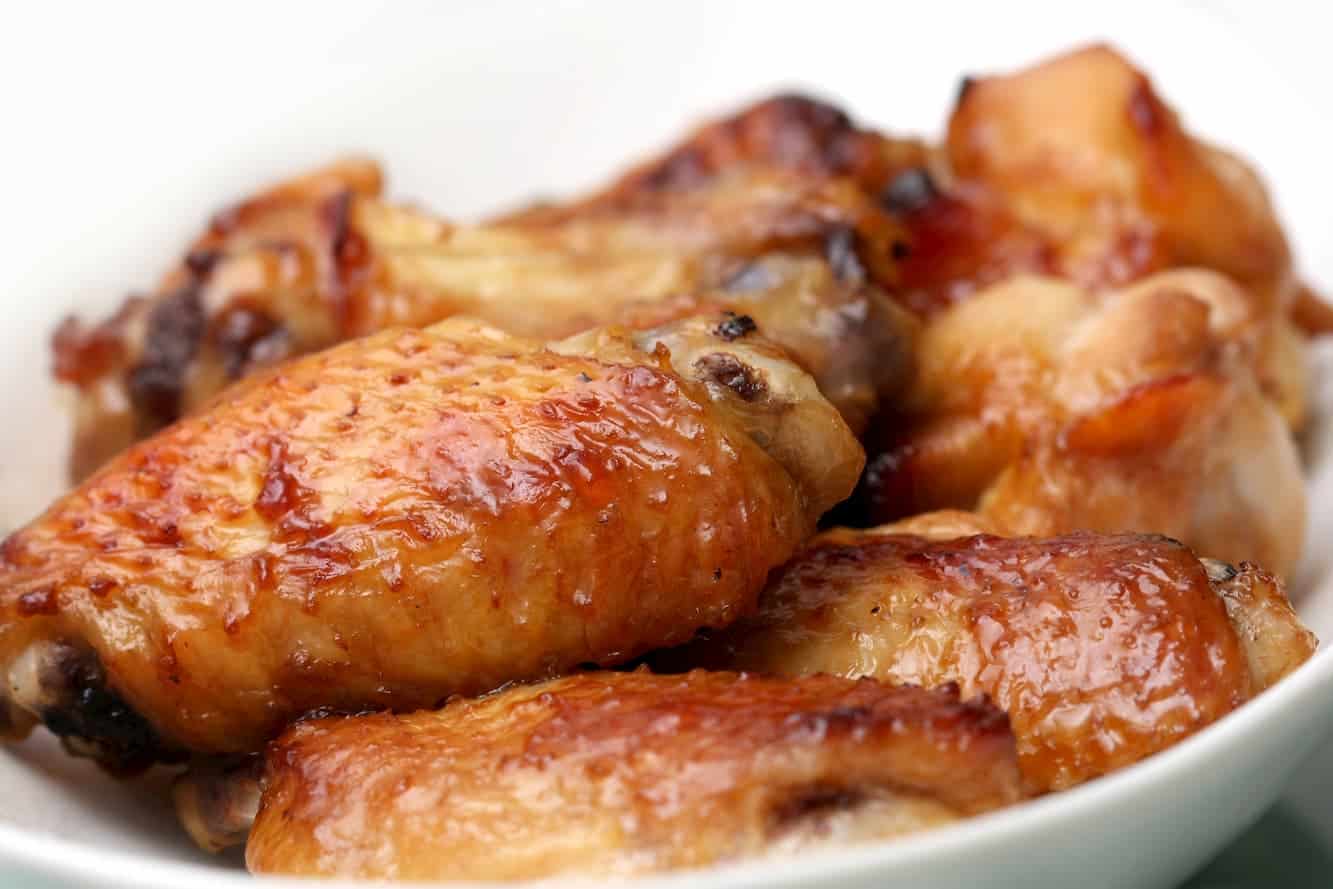If you’re a fan of chicken wings, you’re not alone. They’re a popular appetizer or snack and can be found on menus at many restaurants.
However, there’s been some debate about whether or not chicken wings are actually healthy. On one hand, chicken is a lean protein source and can be part of a healthy diet. On the other hand, the way chicken wings are typically prepared – deep-fried and covered in sauce – can add calories, sodium, and fat to an otherwise nutritious food.
In this article, we’ll dive deeper into the nutritional value of chicken wings and explore whether or not they should be considered a healthy option for your next meal.
Nutritional Content Of Chicken Wings
So, you’re wondering if chicken wings are healthy. Well, let’s start by taking a look at their nutritional content.
A typical serving of deep-fried chicken wings (about 6-8 pieces) contains around 900 calories, 50 grams of fat, and 2 grams of carbohydrates. If you’re watching your diet or have certain dietary restrictions, then these numbers might not sound too appealing.
But hold on a minute! It’s not all bad news. The nutritional value of chicken wings can vary depending on the cooking methods used. Grilled or baked chicken wings are a healthier option compared to deep-fried ones. This method of cooking reduces the amount of fat and calories in the dish while still providing that delicious flavor that we all love.
It’s essential to remember that everything should be consumed in moderation regardless of its nutritional content. So, if you’re going to indulge in some chicken wings, choose grilled or baked options and pair them with healthier sides like vegetables or salad. In this way, you can satisfy your cravings while maintaining a balanced diet.
Health Benefits Of Chicken As A Protein Source
Chicken is a great source of protein, making it a popular choice for many people looking to maintain a healthy diet. While chicken breasts are often considered the healthier option due to their lower fat content, chicken wings can still provide several health benefits.
One benefit of consuming chicken as a protein source is that it contains all nine essential amino acids, which our bodies need but cannot produce on their own. Additionally, chicken is high in niacin and vitamin B6, which help with energy metabolism and can support healthy skin and nerve function.
For those who follow a vegetarian or vegan diet, there are several plant-based protein sources available such as tofu, lentils, and quinoa. However, for those who do consume animal products, incorporating chicken into their meals can provide a delicious and nutritious option.
When choosing between chicken breast and wings, it’s important to consider your personal dietary needs and goals. Chicken breast may be a better option for those looking to reduce their overall calorie and fat intake. Chicken wings can still be enjoyed in moderation as they offer a good source of protein and essential nutrients.
It’s important to choose lean cuts of both chicken breast and wings to ensure you’re getting the most nutritional benefit. Experimenting with different cooking methods such as grilling or baking can also make for a healthier preparation option.
Overall, incorporating chicken into your diet can provide many health benefits as long as it fits within your individual dietary needs and preferences. Whether you prefer chicken breast or wings, both options offer valuable nutrition that can support a healthy lifestyle.
Potential Health Concerns With Chicken Wings
As previously discussed, chicken is a great source of protein that offers numerous health benefits. However, when it comes to chicken wings, there are potential health concerns that need to be addressed.
Contamination risks are one of the biggest issues with chicken wings. This is because they are often cooked at lower temperatures than other cuts of chicken, which can increase the risk of foodborne illnesses such as Salmonella or E. coli. To reduce the risk of contamination, it is important to cook chicken wings thoroughly and avoid cross-contamination by using separate cutting boards and utensils for raw meat.
Another concern with chicken wings is portion sizes. Many people overindulge in this popular appetizer, consuming large quantities in one sitting. This can lead to weight gain and an increased risk of heart disease and other health problems.
To enjoy chicken wings without jeopardizing your health, it’s important to practice portion control and balance them out with healthy side dishes.
In summary, while chicken wings can be a delicious treat, they come with some potential health concerns that need to be taken seriously. By practicing proper food safety techniques and being mindful of portion sizes, you can enjoy this tasty snack without compromising your health.
Comparing Fried Vs. Baked Chicken Wings
As many people would agree, chicken wings are a delicious treat that can be enjoyed on various occasions. However, there has been an ongoing debate on whether they are healthy or not.
In this section, we will compare the health benefits of oven-baked and deep-fried chicken wings.
Firstly, let’s take a look at the cooking method. Oven-baked chicken wings require less oil compared to deep-fried ones. This means that baked wings have fewer calories and less fat content, making them a healthier option overall. On the other hand, deep-fried wings are cooked in hot oil which can add up to a lot of unhealthy fats and calories.
Secondly, when it comes to flavor options, both baked and fried chicken wings offer various choices. However, it’s important to consider the ingredients used for the sauces and coatings as they can greatly affect the nutritional value of the dish. Opting for healthier sauce alternatives such as lemon juice or vinegar-based dips can make your chicken wing indulgence much more nutritious.
In conclusion, while both oven-baked and deep-fried chicken wings may satisfy your taste buds, choosing to bake them instead of frying is undoubtedly the better option if you’re looking for a healthier alternative. Remember to also be mindful of your sauce choices in order to maximize the nutritional value of your meal!
Understanding Different Types Of Wing Sauces
There’s a wide variety of wing sauces available, with different flavor profiles, calories, fat content, sodium content, sweetness, spiciness, heat level, nutritional value, organic vs. non-organic ingredients, popular brands, and regional variations.
We should discuss all these elements, as well as any cautions or health benefits associated with them.
It’s important to know what you’re eating and what’s healthy for you before you try any new wing sauce.
Let’s look into each of these and see what the pros and cons are for each!
Types Of Sauces
When it comes to chicken wings, the sauce is what makes or breaks the dish.
There are two main categories of sauces: spicy vs sweet and traditional vs exotic.
The spicy vs sweet debate is a matter of personal preference, with some people preferring a fiery kick while others opt for a more mellow flavor. Sweet sauces often combine ingredients like honey, brown sugar, or maple syrup to balance out the spice and add a touch of sweetness. Spicy wing sauces typically use hot peppers such as cayenne, habanero, or ghost pepper to give them their heat. Some restaurants even offer a combination of both in their sauces for those who can’t decide between the two.
Traditional sauces like buffalo or barbecue are always popular choices, but more adventurous eaters may enjoy exotic options like garlic parmesan or Korean barbecue. Garlic parmesan is a popular option for those who prefer a milder taste, while Korean barbecue offers a savory and slightly sweet flavor profile.
No matter which type of sauce you choose, it’s important to remember that moderation is key when enjoying chicken wings as part of a healthy diet.
Flavor Profiles
Now that we’ve discussed the debate between sweet vs. spicy and traditional vs. exotic sauces, let’s delve deeper into the different flavor profiles of wing sauces. While some sauces are straightforward in their taste, others offer complex and unique flavors.
For those who prefer a classic flavor profile, traditional sauces like buffalo or barbecue are always a safe bet. Buffalo sauce is tangy and slightly spicy, while barbecue sauce is smoky and sweet. However, for those who want to try something new, creative options like mango habanero or honey mustard offer a twist on the classics.
Sweet vs. spicy isn’t the only factor to consider when choosing a wing sauce – there’s also texture and depth of flavor to think about. For example, garlic parmesan offers a creamy and garlicky taste with a hint of cheese, while teriyaki has a sticky and savory texture that coats the chicken wings perfectly.
In conclusion, understanding the different flavor profiles of wing sauces can help elevate your chicken wing game to new heights. Whether you prefer classic or creative options, there’s always something new to try in the world of wing sauces.
So go ahead and experiment with different flavors – you never know what delicious combination you might discover!
Tips For Making Healthier Chicken Wings At Home
When it comes to chicken wings, the cooking method can have a significant impact on their healthiness. Baking wings in the oven is a healthier option than frying them in oil. Baked wings are still crispy and delicious, but they contain less fat and calories compared to fried wings.
Another factor to consider when making healthier chicken wings is the flavor profile. Instead of coating your wings in a sugary or fatty sauce, try using herbs and spices to add flavor without adding unnecessary calories. Some great options include garlic, paprika, cumin, and chili powder.
Overall, making healthier chicken wings at home is all about balancing flavor with nutrition. By opting for baked instead of fried and using herbs and spices instead of heavy sauces, you can enjoy this classic dish without sacrificing your health goals.
Alternative Protein Options For Wing Lovers
Let’s start by discussing vegan wings.
We all know that plant-based protein is a great alternative to chicken wings, so let’s talk about Quorn, Seitan, and Tofu.
We can also look into Tempeh, Jackfruit, and Mushroom Wings.
Chickpea Wings, Eggplant Wings, Cauliflower Wings, Lentil Wings, Sunflower Wings, and Plant-Based Sauces with Nutritional Yeast are other great options to consider.
Vegan Wings
Are you a wing lover but looking for meat alternatives? Look no further than vegan wings! These plant-based versions of the classic chicken wing can satisfy your cravings while also providing a healthier option.
Meat alternatives such as seitan or tempeh can be used to create a similar texture to traditional wings, and cooking techniques such as baking or air frying can provide a crispy exterior without the added oil and calories of deep-frying.
Not only are vegan wings a great alternative for those wanting to cut down on their meat consumption, but they can also cater to those with dietary restrictions. Many vegan wing recipes are gluten-free and soy-free, making them accessible to a wider audience.
Plus, with the abundance of spices and sauces available, the flavor possibilities are endless. In conclusion, if you’re looking for an alternative protein option that still satisfies your wing cravings, give vegan wings a try.
With meat alternatives and cooking techniques, these plant-based options can provide the same texture and flavor as traditional wings while also being healthier and more inclusive for various diets.
Plant-Based Protein
Now that we’ve explored the world of vegan wings, let’s dive into another alternative protein option: plant-based protein. While traditional meat options may be a staple for many, there are numerous benefits to incorporating more plant-based proteins into your diet.
One major benefit is their high protein content. Contrary to popular belief, it’s entirely possible to consume adequate levels of protein on a vegetarian or vegan diet. Plant-based protein options such as lentils, tofu, and quinoa can provide the necessary nutrients for muscle repair and growth.
However, some drawbacks exist with plant-based protein options. One common issue is the quality of the protein itself. Some sources may be incomplete in essential amino acids, meaning they need to be paired with other foods to ensure proper nutrient absorption. Additionally, some plant-based proteins may have lower bioavailability than animal-based sources.
When it comes to high-protein vegetarian wing alternatives, plant-based options such as seitan or tempeh can provide a similar texture and flavor profile to traditional wings without the added saturated fat and calories. Incorporating these types of proteins into your meals can not only cater to dietary restrictions but also provide a healthier option while still satisfying those wing cravings.
Overall, while there are both benefits and drawbacks to incorporating more plant-based proteins into your diet, exploring alternative protein options such as vegetarian wings can provide a delicious way to diversify your meals while also promoting overall health and well-being.
Balancing Chicken Wings In A Healthy Diet
It is true that chicken wings are often associated with unhealthy eating habits. However, it is possible to balance them in a healthy diet through proper meal planning and portion control. This way, you can still enjoy the delicious taste of chicken wings without compromising your overall health.
When it comes to meal planning, it’s important to consider the nutritional content of the foods you consume. Chicken wings can be high in calories and fat, so it’s best to pair them with healthier options such as vegetables or whole grains.
For example, instead of ordering a large basket of wings, try having a smaller portion with a side salad or roasted sweet potatoes. Portion control is also crucial when incorporating chicken wings into your diet. It’s easy to overindulge in this tasty treat, so make sure to limit your serving size.
A general rule of thumb is to aim for 3-4 ounces per person. Additionally, avoid adding extra sauces or toppings that may increase the calorie count. Overall, balancing chicken wings in a healthy diet requires mindful meal planning and portion control.
By incorporating this tasty treat into your diet in moderation and pairing it with nutrient-dense foods, you can indulge without guilt. Remember to always listen to your body and make choices that align with your personal health goals.
Conclusion
In conclusion, chicken wings can be a part of a healthy diet if consumed in moderation and prepared in a healthier manner. It’s important to consider the nutritional content of chicken wings and understand the potential health concerns associated with consuming them regularly.
One interesting statistic that may surprise you is that Americans consume approximately 25 billion chicken wings each year during Super Bowl weekend alone.
While it’s okay to indulge in this popular snack every once in a while, it’s important to remember that balance is key for maintaining a healthy lifestyle. By making small changes like opting for baked wings instead of fried or choosing a healthier sauce option, you can still enjoy this beloved food without sacrificing your health goals.
Remember, everything is good in moderation!




